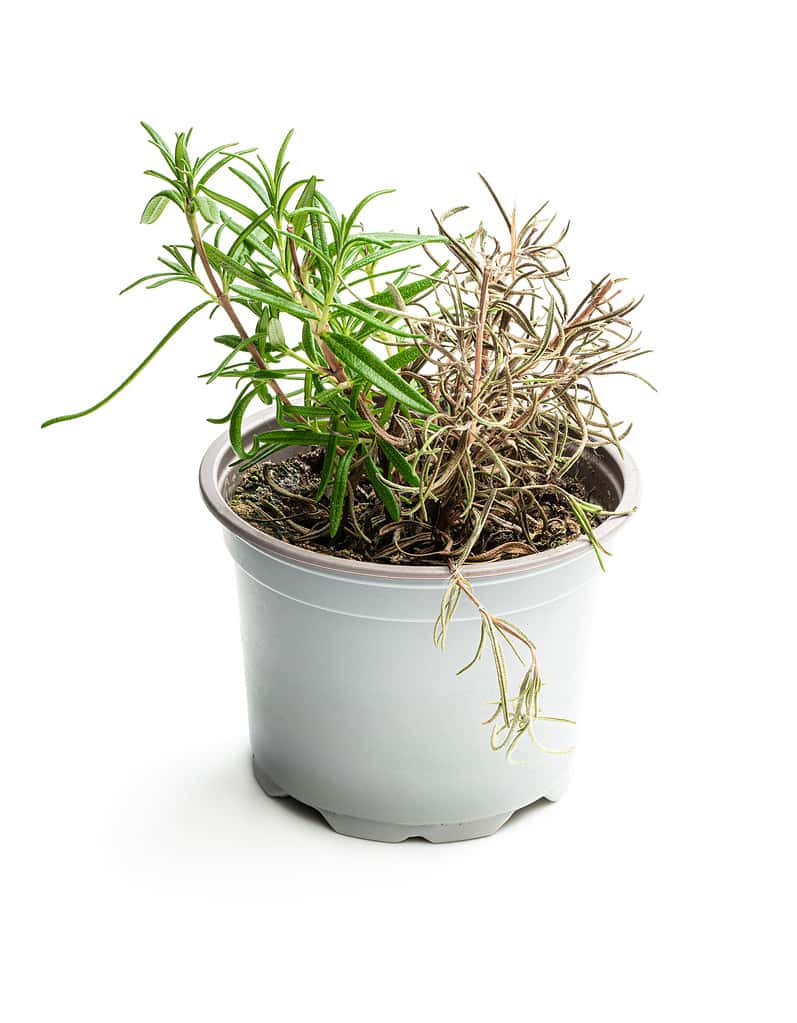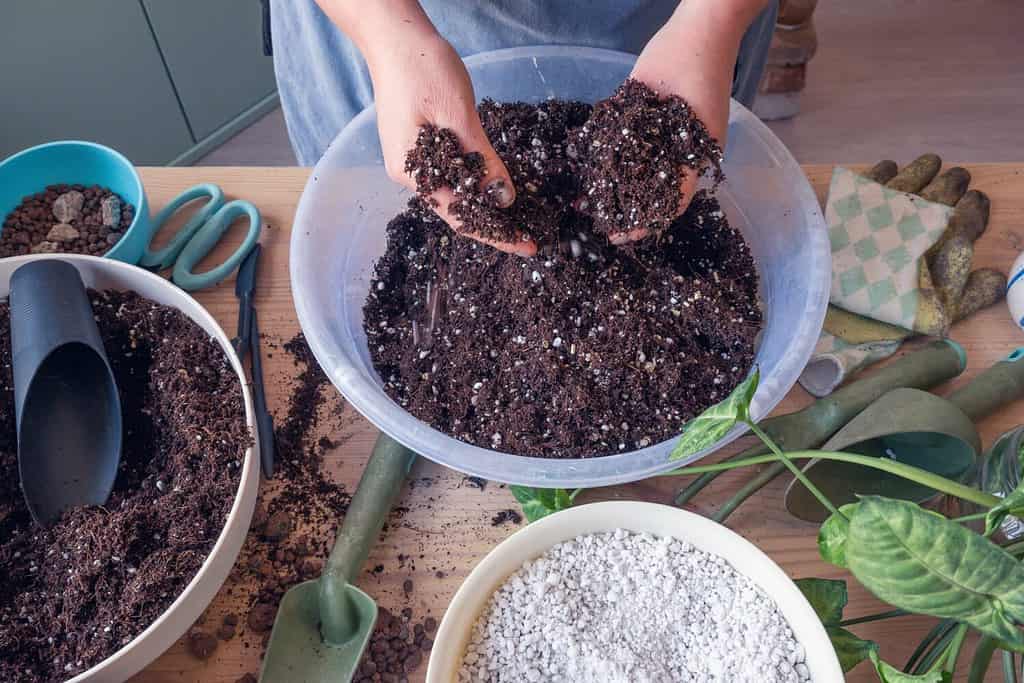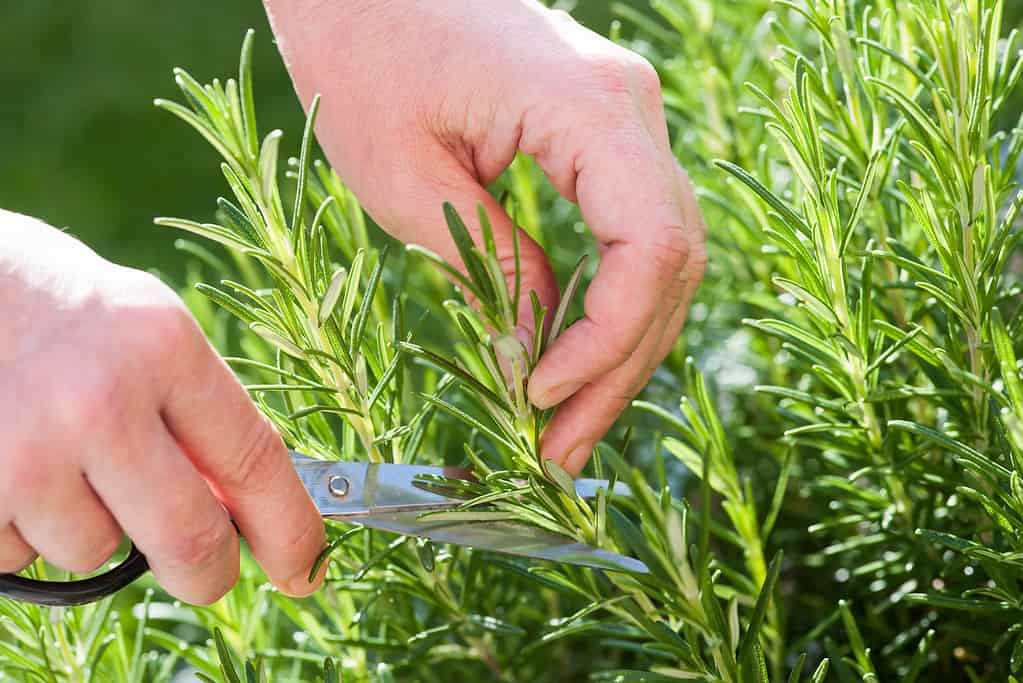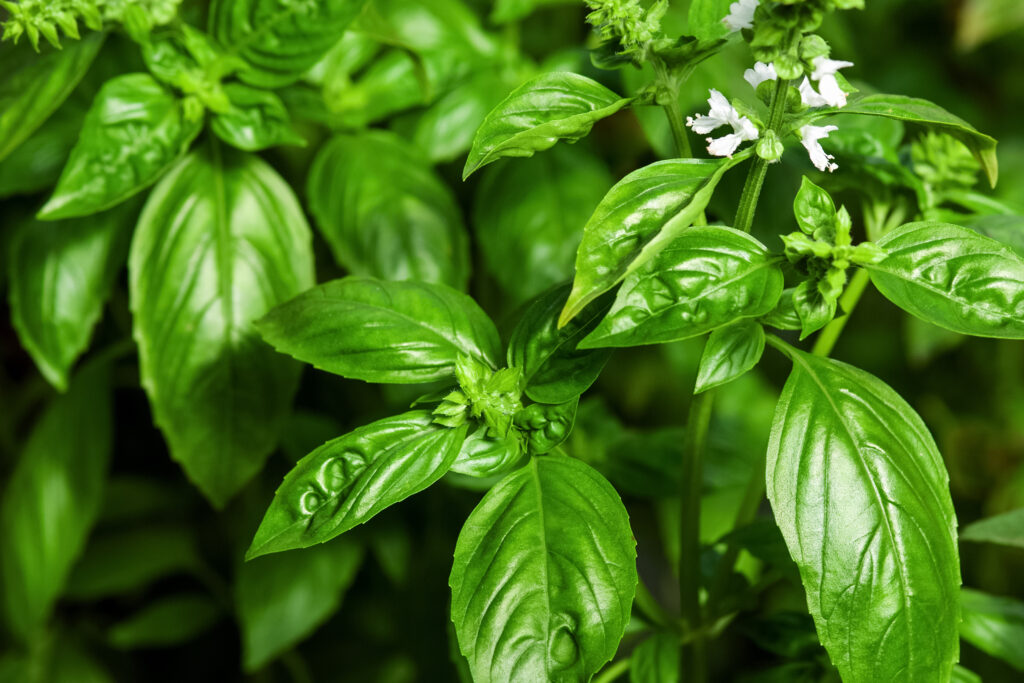Rosemary is a delicious addition to everything from meats to soups. Fortunately, it is also easy to grow in a home garden, indoors or outdoors. It grows as a shrub and matures quickly. You can often start harvesting your rosemary within just a few weeks. Depending on how much you plant and how much you harvest, rosemary can require a lot of space or just a small pot on the windowsill. This versatility in food and growing conditions makes it an excellent plant for your home garden.
The steps to growing rosemary will vary based on the plant size you are starting with. The steps are a bit easier if you have an already established plant, either from a cutting or a small plant from the garden store or grocery store. Remember that this plant is a perennial so it will be more abundant in the warm summer and dormant in the winter.
Steps to Grow Rosemary
Follow these simple steps to keep your rosemary plant alive and growing well indoors.
Step 1: Pick the right pot
Rosemary needs adequate drainage to keep the roots from getting waterlogged. Like most plants, when the roots sit in water, the plant’s health can be impacted. Root rot doesn’t take long and has disastrous consequences for your little plant.
Look for a pot with drainage holes in the bottom. This likely means you need a saucer or other surface below the pot to catch the excess water. If your pot doesn’t have drainage holes, you might be able to drill them, depending on the pot’s material.

Rosemary plants need adequate drainage in the right pot.
©Lena_Zajchikova/ via Getty Images
Step 2: Add soil
Finding the right soil can help your plant get the necessary nutrients. Look for indoor potting soil made for herbs. An all-purpose potting soil can also work since herbs like rosemary are hearty once established. Avoid soils that have included fertilizers or other chemicals. These generally aren’t necessary for rosemary, and because you will be eating the plant, it’s best to stick with something that doesn’t have a lot of additional chemical components.
Avoid packing the soil too much in the pot. Plenty of room for air and water to get to the roots should exist. It can be helpful to shake up the potting soil bag before pouring it into the pot to break up any clumps. When adding soil to the pot, only fill halfway to allow for the plant. You can always fill in any gaps after you add the plant.

The right soil can make caring for your indoor plants much easier.
©Cem Selvi/Shutterstock.com
Step 3: Repot your plant
If you start with a small rosemary plant you bought at the store, it is time to relocate it to its new home. Many rosemary plants come in small pots, but those are meant to be temporary. The roots are compacted and don’t have any room to continue growing. If you leave the rosemary in that pot, it will quickly outgrow its home (if it hasn’t already). Repotting the rosemary into a larger pot allows it to grow and thrive.
Generally, it would be best to have a pot around three times as large as the rosemary plant. It would be best to consider this when selecting the variety of rosemary you want to grow. Because you will grow it inside, you’ll likely need a smaller variety. Blue Boy rosemary tends to be small, making it a good option for indoor growers.

Rosemary is safe to have around pets, but it’s not generally a preferred part of their diet.
©Switlana Sonyashna/Shutterstock.com
Step 4: Water periodically
This herb likes just the right amount of water. You should keep the soil moist and water if it gets dry. But avoid overwatering, which can lead to root rot. Generally, watering rosemary when the soil is dry to the touch is enough. Letting the soil dry out slightly is better than overwatering the plant. If you’re unsure, feel down a few inches into the soil. It shouldn’t be wet at all, only barely moist. Remember that the water will travel through the soil to get to the roots. This is why you don’t want to pack the soil too much in step 2.
Step 5: Give the plant sun
Rosemary plants love the sun. If plants could wear SPF, rosemary would say “no thanks” in a heartbeat. The best way to ensure that rosemary gets enough sun is to put it in direct sunlight. A windowsill is an ideal spot for this. Just keep in mind the size of your pot relative to the width of your windowsill. The last thing you want is for your rosemary pot to fall off the windowsill, resulting in spilled soil and an unhappy plant.
Step 6: Put it in a warm space
Rosemary doesn’t like cold weather, so avoid putting this plant in a sunroom or space without climate control unless you live in a warm climate. It can tolerate temperatures slightly cooler in the wintertime but still does best indoors in most cases. Ensuring the plant gets enough light in the winter when days can be shorter is essential.
This herb is a perennial. This means it has a distinct growing season (summer) and a period where it goes dormant (winter). Proper care allows you to harvest rosemary grown indoors in the winter. But don’t be surprised when its growth slows during the dormant season.
Step 7: Prune as needed
This herb grows fast. You may need to cut it back occasionally if you can’t keep up with the yield. Not pruning will reduce the amount of water, nutrients, and sunlight getting to the plant and can harm it. Don’t be afraid to cut back since the rosemary will proliferate. You can use these cuttings in dishes, dry them to use later or give them away as delicious-smelling tiny bouquets. Your gift recipients can even use rosemary cuttings to start their plants.

Prune rosemary by cutting off excess stems.
©AlexRaths/ via Getty Images
Growing Rosemary from Seeds
You can grow rosemary from seeds, but they are finicky and hard to get going. Starting from seeds can be very economical, but not to mention fun. Watching the tiny sprouts shoot out of the soil can give you something to check in on daily. It is also fun with young kids, who often enjoy seeing their plants change daily.
If you start rosemary from seeds, you’ll likely need to repot a few times before they reach their maximum size. This can be an adjustment for the plant, which is one reason many people prefer to start with small rosemary plants they can care for. If you do start with seeds, get seedling pots to start. These are very small and cheap, allowing you to plant more than one rosemary. If one of them doesn’t make it, you’ll have others ready to go. If they survive, you’ll have plants to gift to friends, family, and neighbors.
What to Do with Rosemary
Rosemary smells amazing, so you’ll enjoy the benefits of having this woody herb in your home immediately. It makes a great addition to the kitchen because it reminds people of this herb’s delicious recipes.
Cooking with rosemary is also very popular. You can use it to season everything from roast chicken to leg of lamb. It makes a particularly great addition to bread, whether you chop it and mix it into the dough or put sprigs on top for both decoration and flavor.
A little rosemary goes a long way. When adding it to your dish, start with a sprig or two. You can chop them up finely or add them whole, then remove the stem later. Rosemary is easy to dry and keep longer, although this takes some planning. In general, use half the amount of dried rosemary that you would fresh rosemary for a similar effect. Like all cooking, adding a small amount to your dish and tasting it is better. If you want more flavor, you can always add more.
Rosemary is a great air freshener as well. Simmer rosemary and citrus fruits in water on the stove to add an amazing aroma to your home. You can also make essential rosemary oil, although this process can be complicated for those unfamiliar.

Fresh herbs are a great addition to your cooking routine.
©iStock.com/Vladimir Mironov
Herbs to Grow in Your Kitchen
If growing rosemary indoors works for you and you want to expand your kitchen garden, here are a few more herbs you can grow.
Basil
This herb is easy to grow indoors and can add a bright, fresh taste when used in salads, vegetables, and fruit. Following similar steps can help you get started with a small basil plant. Fortunately, these grow quickly and are easy to find as starter plants in many garden stores or grocery stores.

Sweet basil has a bright green leaf with small white flowers and has a slightly bitter flavor with notes of citrus and mint.
©Nadya So/Shutterstock.com
Oregano
This is a popular herb in Mediterranean dishes, so if you cook a lot of that style of food, you’ll be happy to have oregano on hand. Keep in mind that it does grow low and tends to spread. This can impact the size and style of pot best suited for oregano.

Oregano has small leaves and grows very low.
©Artem Kontratiev/Shutterstock.com
Parsley
Like rosemary, parsley likes plenty of sun. You can easily grow this herb from seeds, so it’s a good option if you want to try starting your plants. Put it next to the rosemary on a sunny window and watch the two plants soak up the rays.

Parsley is a biennial herb that belongs to the family of Apiaceae.
©nblx/Shutterstock.com
Mint
This tasty herb grows quickly and can take over an outdoor garden. Many gardeners prefer to grow it in pots, making it a good option for an indoor garden. Mint can grow in full sun or some shade, but make sure to keep the soil moist. Cats love mint (it’s in the same family as catnip). Don’t be surprised if your feline friend is interested in your mint plant.

Mint is used all around the world for its culinary and medicinal uses.
©MarcoFood/Shutterstock.com
The photo featured at the top of this post is © Albina Yalunina/iStock via Getty Images
Thank you for reading! Have some feedback for us? Contact the AZ Animals editorial team.







